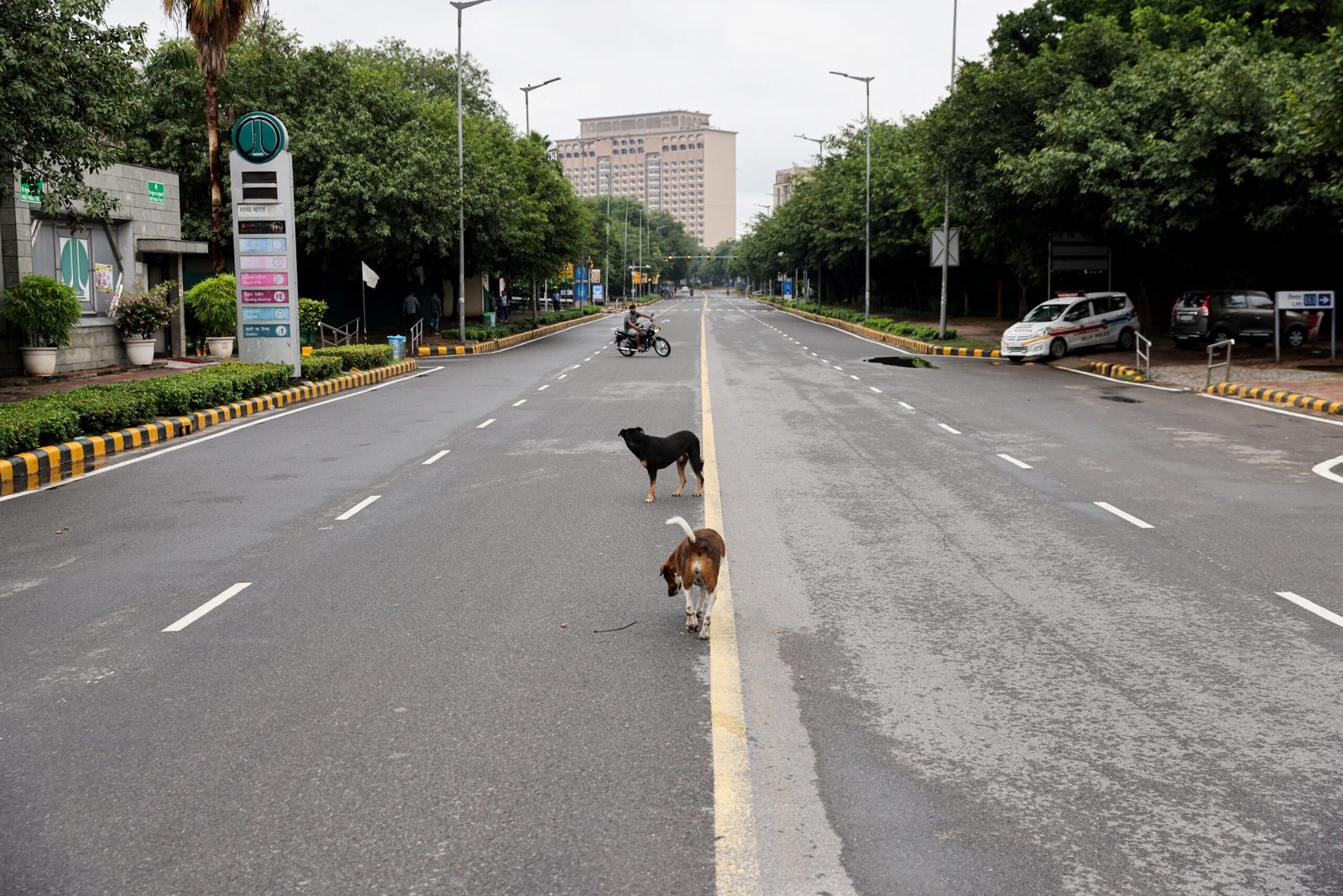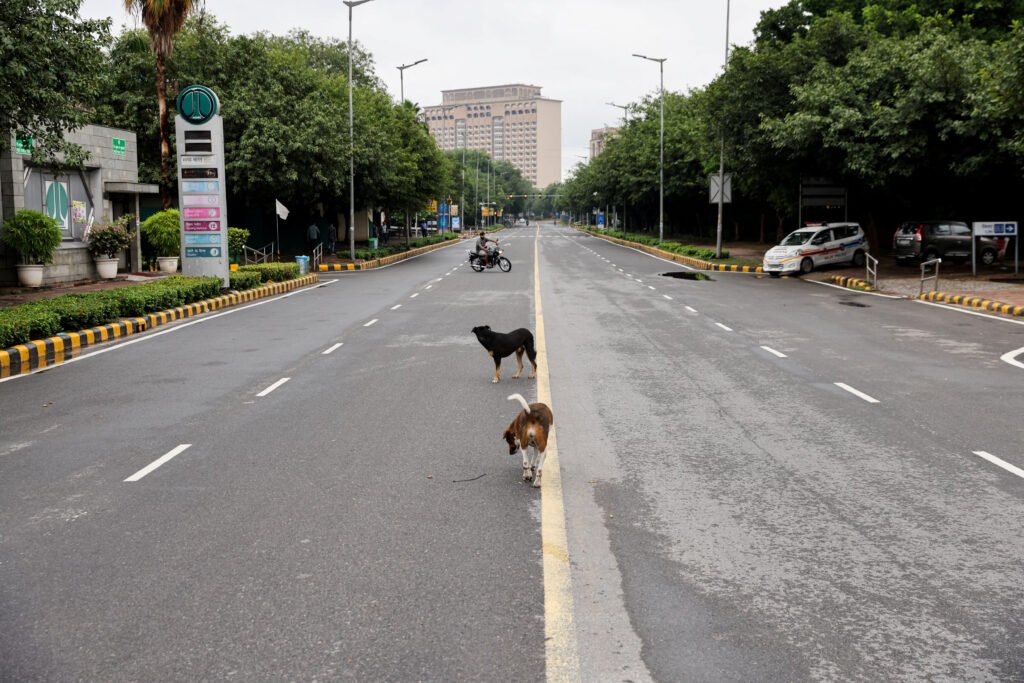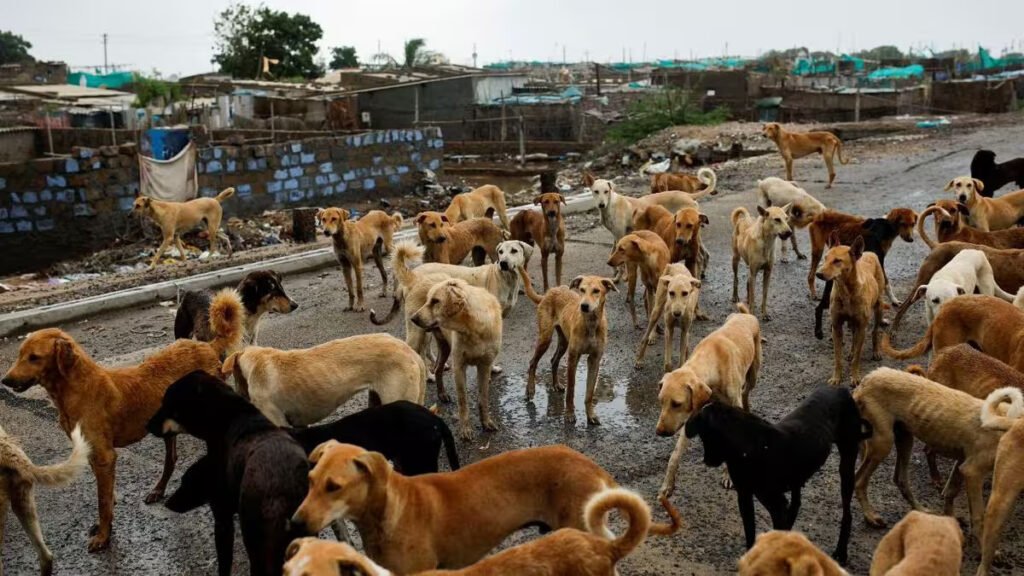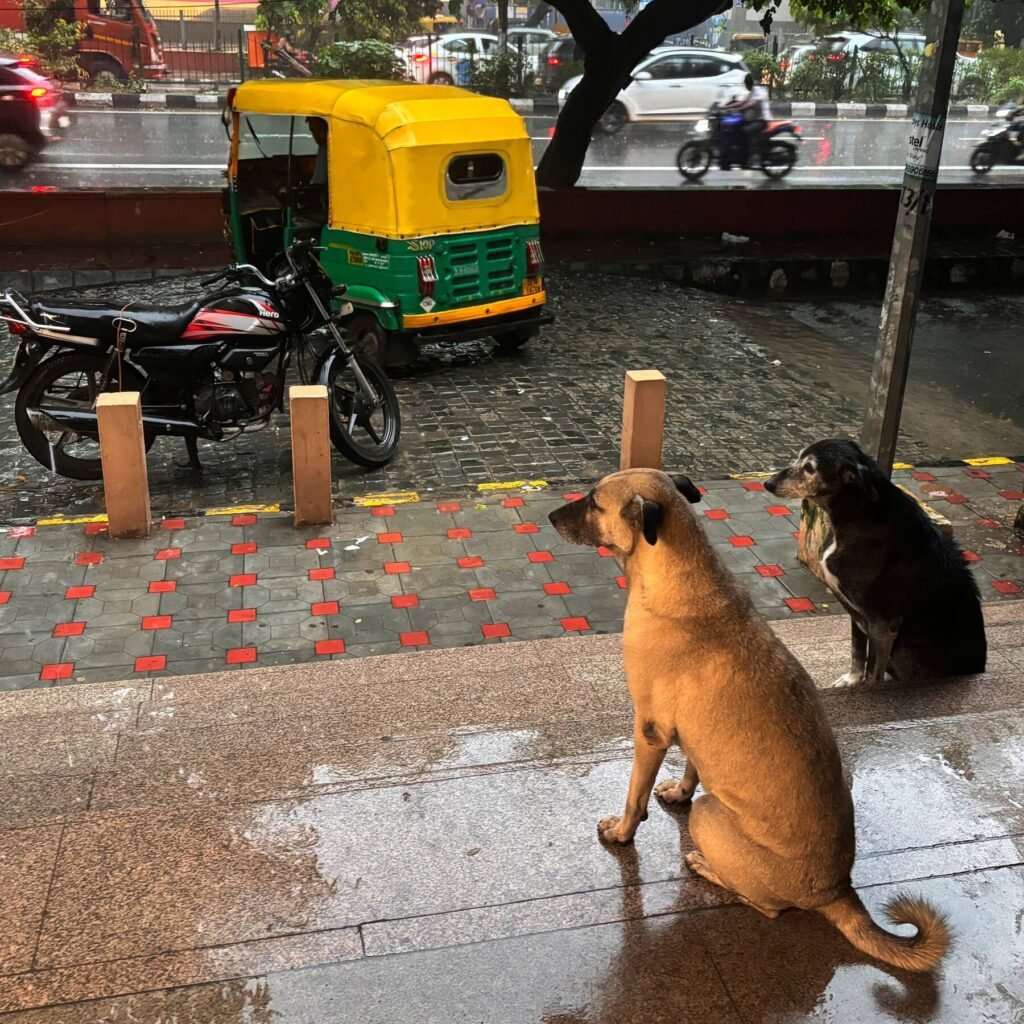
Introduction
Delhi stray dog population in Delhi has long been a matter of public concern. Recent court directives have brought the issue into the spotlight, with a clear timeline and strategy for removing stray dogs from the streets. The move is being seen as a major policy shift one aimed at protecting public safety while also sparking debates about animal rights and humane treatment. This article presents an unbiased overview, laying out the facts and different perspectives without taking sides.

Judicial Directive and Timeline
The recent court order sets a strict deadline for authorities to remove stray dogs from public spaces. The plan requires dogs to be captured, sterilized, vaccinated, and placed in dedicated shelters. These animals will not be re-released onto the streets, marking a significant change from previous protocols.
Alongside removal, the directive calls for a helpline for dog bite incidents to be established within days, as well as CCTV monitoring in shelters to ensure safety, transparency, and prevention of unauthorized release.
Why This Action Was Taken
The move is primarily driven by public safety concerns. Dog bite incidents have been rising sharply in the city, with several reports of severe injuries and rabies cases. The court observed that the existing system was unable to adequately address these problems, particularly in densely populated neighborhoods, marketplaces, and near schools.
By ordering a complete removal from public spaces, the intention is to reduce bite incidents, control rabies transmission, and prevent situations that put vulnerable citizens such as children and the elderly at risk.
Read Also Vantara – Animal Superpowers: Nature’s Most Incredible Adaptations

The Role Vantara Can Play
As an organization dedicated to wildlife and animal welfare, Vantara has both the infrastructure and expertise to support humane solutions for managing Delhi’s stray dog population.
Vantara could:
- Provide shelter space in existing facilities or collaborate on the development of new shelters.
- Assist in veterinary care, including sterilization, vaccination, and treatment of injured animals.
- Offer training programs for municipal staff and volunteers on safe capture and handling.
- Raise public awareness through campaigns that promote responsible pet ownership, adoption drives, and community engagement.
By working alongside civic authorities, NGOs, and local communities, Vantara could help ensure that the implementation of the court’s directive is both effective and compassionate.
Shift From the Previous Policy
Read Also Vantara Jamnagar Ticket Price 2025 Full Guide with Entry Fee, Timings & More
Until now, Delhi followed the Animal Birth Control (ABC) Rules, which allowed sterilized and vaccinated stray dogs to be returned to their original locations. This “catch-neuter-release” model was considered both humane and effective by many animal welfare groups.
The latest order changes this completely, replacing the release-back approach with a shelter-only model. Supporters say this is the only way to ensure lasting safety, while critics believe it abandons a tested and lawful system that had been in place for years.
Practical and Logistical Challenges
Shelter Capacity
Authorities now face the challenge of housing thousands of stray dogs within a short period. Existing shelters are already at or near full capacity, and building new facilities requires significant land, resources, and staffing.
Operational Planning
Capturing large numbers of stray dogs without causing harm demands skilled personnel, proper equipment, and coordinated planning between municipal teams, veterinary services, and animal handlers.
Read Also Vantara Jamnagar Everything You Need to Know Before Visiting!
Funding Requirements
Long-term care for thousands of animals will involve costs for food, healthcare, maintenance, and monitoring. Securing consistent funding is likely to be one of the biggest hurdles.
Voices and Perspectives
Public Safety Advocates
Resident Welfare Associations and safety-focused groups argue that removing strays will make parks, streets, and school zones safer. They highlight that not all dogs, even after sterilization, lose territorial aggression, which can lead to attacks.
Animal Welfare Advocates
Animal rights groups stress that large-scale removal may lead to overcrowded shelters and poor living conditions. They believe that sterilization, vaccination, and responsible feeding remain the most humane and sustainable solutions.
Legal and Policy Experts
Some legal professionals question whether this change aligns with existing animal protection laws, noting that a long-term policy should aim for both safety and compassion.
Read Also How to Visit Vantara? Here’s the Complete Information You Need
Community Reactions
Public opinion is deeply divided. Some residents feel reassured, believing this will finally address a longstanding hazard. Others worry that removing street dogs entirely may cause ecological imbalance, increase rodent populations, and create ethical dilemmas around animal rights.
Many agree, however, that any solution whether removal or controlled return must be backed by proper infrastructure, transparency, and monitoring to be effective.

The Road Ahead
The success of the plan will depend on several factors:
Read Also How to Visit Vantara – Everything You Need to Know
- How quickly shelters can be expanded or built
- Availability of trained manpower for safe capture and care
- Continuous funding and resource allocation
- Transparent monitoring to ensure humane treatment of animals
Upcoming reviews and follow-up hearings are expected to evaluate the progress, address operational issues, and make any necessary adjustments to the approach.
Conclusion
Delhi’s stray dog removal directive marks a turning point in urban animal management. It seeks to prioritize public safety, but it also presents complex ethical, logistical, and legal questions. The coming months will reveal whether this shelter-only model can deliver a solution that is safe, humane, and sustainable. Striking a balance between the well-being of citizens and the rights of animals remains the ultimate challenge.


 Previous Post
Previous Post Next Post
Next Post